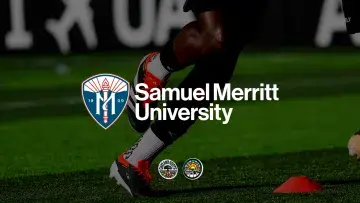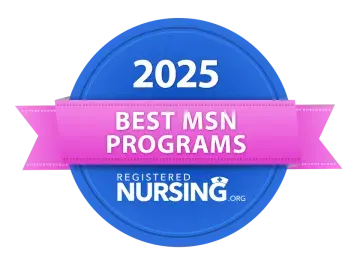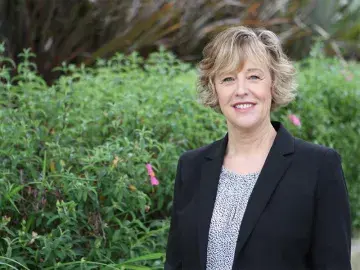Cannabis Offers Alternative to Opioids & Pharmaceuticals
The average age of Eloise Theisen’s patients is 76 and most have never used marijuana, but nearly all of them are interested in how cannabis can treat their chronic pain and sleep problems.
“Most don’t want to get high or smoke it,” said Theisen, a nurse practitioner who counsels patients on how to use cannabis products to manage health conditions, treat illnesses, and reduce their intake of pharmaceuticals.
“I tell them to start low and go slow,” she said of cannabis dosing for novices.
With marijuana use now legal for adults in California, Theisen gave an overview of “cannabinoid therapeutics” at the 28th Annual Picchi Memorial Lecture at Samuel Merritt University (SMU) on March 22. The lecture series examines social and healthcare trends to help patients become more informed decision-makers.
Theisen said she created a cannabis therapy practice called Green Health Consultants in Lafayette, Calif. after cancer patients repeatedly asked her if medical marijuana could help counteract the side effects of their chemotherapy treatment. Since her business does not sell cannabis products, she refers patients to local dispensaries.
“I don’t prescribe it,” she said. “I recommend it.”
Because marijuana remains illegal under federal law, Theisen said she was forced to consider the possibility that she could be arrested in her business plan. But she said she remains committed to counseling patients on the medical benefits of cannabis and training other clinicians on its therapeutic potential.
To an audience at the SMU event largely reflecting the demographics of her patients, Theisen demonstrated how cannabinoids — the various active chemical compounds derived from the cannabis plant — can help treat conditions ranging from insomnia and nausea to Parkinson’s disease and aggressive behavior in dementia patients.
The reason cannabinoids work so well for so many ailments, according to Theisen, is because they interact with the body’s own endocannabinoid system — a group of receptors in the brain and immune system responsible for maintaining a sense of well-being, or homeostasis.
In many cases, she said, cannabis products can be a safer and more effective alternative to pharmaceutical sleep aids, analgesics, and anti-anxiety medications. And because it’s not possible to lethally overdose on cannabis, it’s becoming a non-toxic alternative to opioid medications.
“A lot of cannabis advocates think it’s the answer to the opioid crisis,” she said.
Theisen said her patients fear the most well-known cannabinoid, THC, because of its psychoactive effects. Instead, many are turning to cannabidiol, better known as CBD, because it offers analgesic, anti-inflammatory, and anxiety-fighting properties without the mind-altering effects of THC.
CBD on its own is not successful for most people, according to Theisen. But when the two are taken together, she said, CBD can actually boost THC’s painkilling properties while diminishing the anxiety or paranoia some experience with THC.
“Some of my patients have euphorophobia,” she said. “I let them know that they can control it and give them permission to feel good.”
She offered details and comments about various methods of consuming cannabis:
- Smoking remains the most common method, with users feeling an effect within five to 10 minutes that only last up to three hours. “It gives patients the most control,” said Theisen.
- Vaporizing the extracted oils in liquid form is increasing in popularity, but some patients tell Theisen that it’s not as effective as smoking.
- Edibles can be unpredictable because the onset of their long-acting psychoactive effects can take as many as four hours. As a result, many people end up taking more than they should. “Everyone has an edible experience,” she said, specifically referring to New York Times columnist Maureen Dowd’s experience with eating a cannabis chocolate bar.
- Waxes, shatter, and resins are highly concentrated forms of cannabis and very high in THC.
- Tinctures are liquid cannabis extracts that offer patients dosage control and fast-acting effects through drops under the tongue.
- Transdermal patches can help with pain for up to 12 hours and won’t compete as much as other methods with pharmaceutical medications.
- Topical balms are non-psychoactive and can be a remedy for arthritis and other localized issues. “I’ve heard someone call topicals the gateway drug to cannabis,” Theisen quipped.


